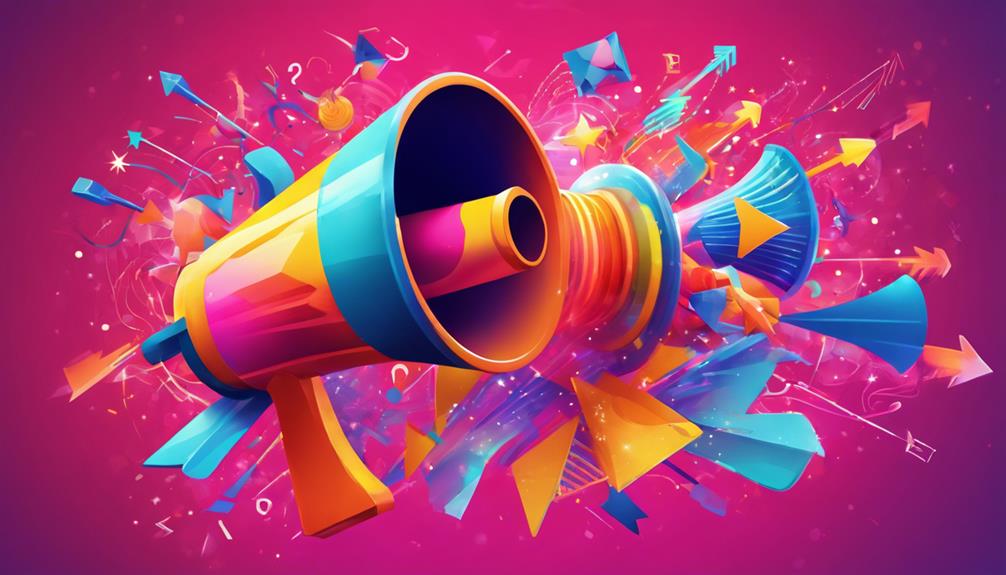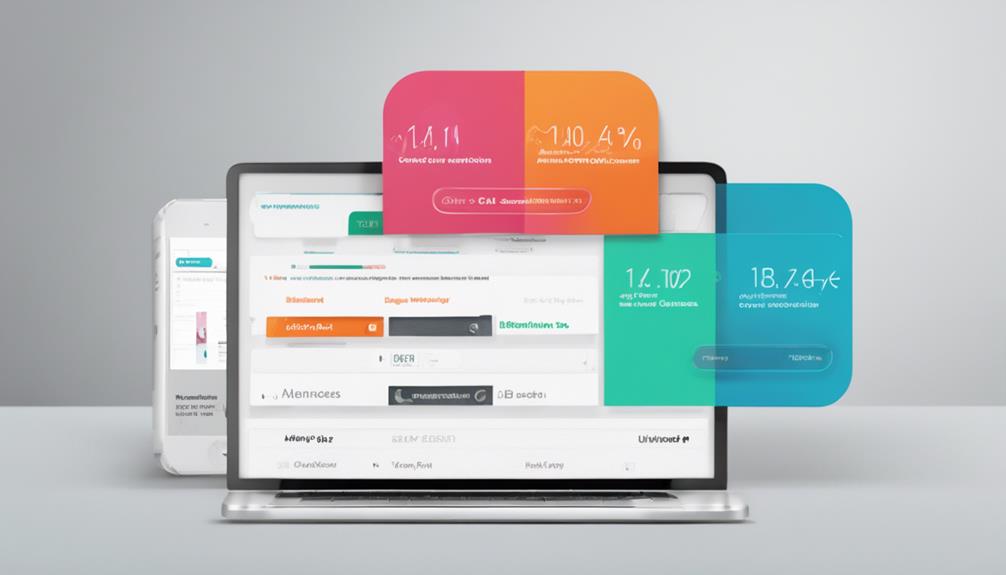You might not realize that a subtle tweak in the placement of your call-to-action (CTA) button can dramatically shift conversion rates. While compelling language and urgency are crucial, understanding your audience's behavior can guide you to optimal CTA strategies. Imagine boosting engagement simply by personalizing your message or strategically positioning your button. But there's more to it than just these tactics. How can you ensure that your CTAs truly resonate and drive the desired action? By exploring tested strategies, you can unlock the full potential of your CTAs and increase conversions effectively.
Understand Your Audience
Understanding your audience is crucial for crafting effective call-to-action strategies that boost conversion rates. You need to delve into data analytics to grasp who your audience is, what they need, and why they visit your site.
Start by analyzing demographic data—age, gender, location—and psychographic insights, such as interests and behaviors. This data reveals patterns that guide you in tailoring your CTA to resonate with your audience.
For instance, if data shows a significant portion of your audience is driven by environmental concerns, a CTA that emphasizes sustainability will likely perform better. HubSpot's research indicates that personalized CTAs convert 202% better than generic ones. Use this to your advantage by segmenting your audience based on their unique attributes and crafting CTAs that speak directly to these segments.
Utilize tools like Google Analytics and heatmaps to track user interactions on your website. These insights help you understand how your audience navigates your site, which pages hold their interest, and where they drop off.
For example, if your data reveals that users frequently abandon their carts, your CTA could offer a limited-time discount to prompt a purchase.
Furthermore, A/B testing is vital. By experimenting with different CTA placements, colors, and wording you can determine what resonates best with your audience. According to Optimizely, businesses that regularly conduct A/B testing see a conversion rate improvement of 49%.
Use Compelling Language

Frequently, the words you choose for your call-to-action (CTA) can make or break its effectiveness. Data shows that CTAs with compelling language can increase conversion rates by up to 121%.
So, how do you craft a CTA that stands out? Start by using action-oriented words. Verbs like "discover," "unlock," or "boost" motivate users to take action. They not only direct attention but also suggest a beneficial outcome, anchoring your CTA in value.
Consider personalizing your language. Personalization increases engagement by 202%, according to studies. By addressing your audience directly, you create a sense of connection and urgency. Phrases like "Find your solution" or "Start your journey" transform a generic CTA into a targeted message that resonates with the reader's specific needs.
Another strategy is to incorporate emotional triggers. Words that evoke emotions can significantly impact decision-making processes. For instance, using "exclusive" or "limited-time" taps into the fear of missing out (FOMO), a powerful psychological driver. This can lead to a 33% increase in click-through rates.
Moreover, clarity is key. Avoid jargon or overly complex language that might confuse your audience. Simplicity and directness in your CTA language ensure that your message is understood in a split second, crucial in today's fast-paced digital environment.
Optimize Button Placement

While crafting a compelling call-to-action is crucial, its placement on your webpage can be equally influential in driving conversions. Strategic button placement not only captures attention but also guides users seamlessly toward taking action. Research shows that optimizing placement can boost your conversion rates by up to 45%.
Here's how you can effectively optimize your CTA button placement to maximize impact:
- Above the Fold: Place your primary call-to-action above the fold, the section of your webpage visible without scrolling. Data indicates that CTAs positioned here can increase engagement by 20%, as visitors are more likely to interact with elements they see first.
- End of Content: Position your CTA at the end of your content. When information or storytelling resonates with users, they're more inclined to act right after they've digested your message. Studies reveal that CTAs following informative content can lead to a 30% increase in conversion, as they capitalize on peak user interest.
- Multiple Instances: Utilize CTAs in different sections for longer pages. This approach caters to various user behaviors, ensuring that no matter where someone stops scrolling, they're prompted to take action. Users have been found to convert 17% more when presented with multiple CTAs throughout a page.
- Contextual Relevance: Align your CTA with the context of surrounding content. When CTAs are contextually relevant, conversion rates can surge by 25%, as users find the transition to action more intuitive and less jarring.
Test Different Designs

Testing different designs for your call-to-action (CTA) can significantly impact your conversion rates. You might think that a simple button can't make much difference, but data suggests otherwise. According to a study by HubSpot, a well-designed CTA can boost conversion rates by up to 121%. That's a figure you can't ignore.
You need to explore various elements like color, size, shape, and text to find what resonates best with your audience.
Start by focusing on color. It's not just aesthetic; it's psychological. Research by Kissmetrics shows that color can increase brand recognition by 80%. A/B testing different color schemes for your CTA button can provide you with insights into what attracts clicks. For instance, a red CTA might convey urgency, while a green one might suggest safety and trust.
Next, consider the size and shape of your CTA. A larger button might be more noticeable, but it shouldn't overwhelm your page. According to studies, rounded buttons tend to outperform square ones because they're perceived as more clickable. Test these variations to see which one garners more interaction.
Lastly, don't underestimate the power of text. Changing a single word can have a substantial effect on conversion rates. Data from Unbounce indicates that action-oriented words like "Get," "Try," or "Start" can encourage more clicks.
Analyze your audience's behavior and preferences to tailor your CTA text accordingly.
Leverage Urgency Tactics

One powerful strategy to enhance your conversion rates is leveraging urgency tactics. By creating a sense of urgency, you encourage potential customers to act swiftly, reducing the likelihood of second-guessing or abandoning their decision altogether.
Data from industry studies show that urgency can increase conversion rates by up to 332%. So, how do you effectively integrate urgency into your call-to-action strategies?
1. Limited Time Offers: Setting a clear deadline on offers pushes your audience to make quick decisions. For example, using phrases like "Ends Tonight" or "24-Hour Flash Sale" can create a compelling reason to act now.
Analysis shows that limited-time promotions can boost engagement by 22%.
2. Scarcity Alerts: Highlighting limited stock availability can effectively drive conversions. Phrases like "Only 3 left in stock" tap into the fear of missing out (FOMO), which is a powerful psychological trigger.
Scarcity tactics can increase sales by up to 18%.
3. Countdown Timers: Employing countdown clocks on your product or landing pages creates a visual cue that time is running out.
Studies indicate that countdown timers can increase conversion rates by 9%. They're a straightforward way to visually communicate urgency.
4. Urgency-Based Language: Use assertive, time-sensitive language in your CTAs. Phrases like "Get Yours Before It's Gone" or "Act Now" can motivate users to take immediate action.
A/B testing has shown that urgency-laden CTAs outperform generic ones by 14%.
Conclusion
You've got the blueprint for crafting CTAs that convert like a well-oiled machine. By understanding your audience and using compelling language, you can speak directly to their hearts. Optimize button placement to catch their eyes, and don't shy away from A/B testing—it's your magnifying glass for precision. Finally, leverage urgency like a ticking clock to drive action. These data-driven strategies are your keys to unlocking higher conversions and fostering meaningful user interactions.


Leave a Reply